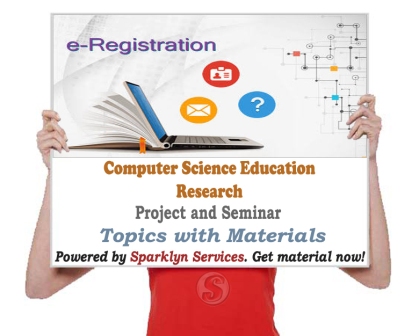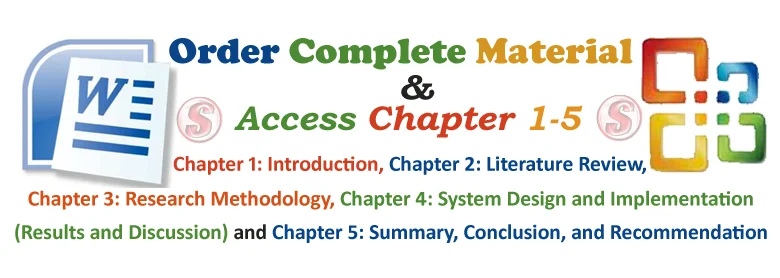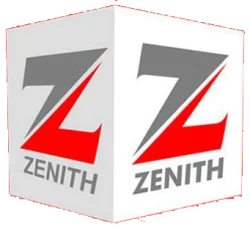1.1 Introduction
Distance Learning is a system designed to help students gain access and acquire knowledge in any university of their choice. Google Classroom is a free application designed to assist students and teachers connect, work together, organize and create assignments, it enables learning to be paperless. As a Digital Tool, Google Classroom is accessible only to users with Google Apps for Education. This is a free collaborative set of tools, these tools includes web tools like Google Docs, Google Drive, Gmail, and more. All users will GAFE account, have access to these web tools. Google Classroom can be used at any grade (basic, post basic and tertiary) levels, but this depends on the teachers’ and students’ competence (Bell, 2015).
As a prelude to other parts of this study, this chapter will discuss the background upon which this study was initiated, the statement of problems that led to this study, the Aim and Objectives of the study. Others are Significance of the study, Scope of work, Research hypothesis and questions, Limitations of the Study and Definition of technical terms.
1.2 Background of Study
A distance learning framework carries education nearer to the individuals and evacuates the pressure and imperatives, which characterize the conventional classroom learning system. The hallmarks of distance learning are the separation of teacher and learner in space and/or time, the control of learning by the student rather than the distant instructor, and non-adjacent communication between student and teacher, mediated by print or other forms of technology. At its most essential level, distance education is a procedure where number of teachings is conducted by remotely located lecturers. Two categories of distance learning systems exist; namely On-line and Off-line distance learning. On-line distance learning, also known as virtual classroom is a type of learning system in which students work on their own at home or at the office and communicate with personnel and different studies by means of email, electronic discussions, videoconferencing and different types of PC based correspondence. Off-line distance learning on its own is a multi-campus system where a University or Polytechnic establishes many campuses and each of these campuses may be centrally controlled or decentralized.
Education is the way toward achieving a generally lasting change in human conduct. It is the primary instrument used to safeguard, keep up and overhaul people’s culture, standards and qualities. In any developing country, education is a veritable device for deciding innovative headway and passing on to the new ages, the current learning of the physical condition. Training likewise fills in as stage for presenting people to any association, giving aptitudes for performing day by day employments, recreation just as teaching sound ethics in the individuals for their own advantage and that of the general public. In synopsis, training is the stage on which more youthful age comprehend the past legacy just as take an interest and contribute seriously to the development and advancement of the general public. Conventionally, education has been practiced across the world in segregated buildings by carefully regimented and standardized classes of students and teachers.
The student – lecturer and student-classroom ratios have grown to the extent that teaching and learning in the classroom have been less effective. The field of education therefore provides the most fascinating application of computing system, which has consequently attracted considerable attention from educationists and policy makers since the late 1960s when computers were introduced into classrooms. Various information technologies have been applied in learning and teaching, such as Computer Aided Instruction, (CAI), Computer Aided Learning (CAL), Research Packages, Project Monitoring, and Computerized Libraries and so on. As a result of technological advancement in multimedia technology, computer networks and the Internet, computers are now being applied in distance learning premised on on-line and real time teaching and instruction.
Google Classroom is a new tool introduced in Google Apps for Education in 2014. This classroom facilitates the teachers to create and organize assignments quickly, provide feedback efficiently, and communicate with their classes with ease. Distance Learning results to learning and other supportive resources that are available through a computer and it includes computer based training, computer based instruction and technology.
Therefore, in Nigeria where the research was carried out, the activities that was conducted is to assess the Effective use of Google as a Learning Tool in an Online Distance Learning.
1.3 Statement of Problems
Investigation revealed that due to the problems students find and experiences, it has never been easy for students to acquire basic and necessary education in any institution one wishes irrespective of the fact that the resources are there. This poses a lot of problems sometimes they will embrace not going to school at all. Sometimes if number of students increase reduction in student admission will be affected in order to provided adequate structures where they can have their lectures.
Google has already made an impact on education with its Google Apps for Education. To name some are Google Docs, Google Spreadsheets, GC, and others that can be easily utilized by teachers and students. GC is a tool available for developing teaching and learning process all over the world as it can enhance students self-directed learning and cognitive skills (Maroof & Emran, 2018).
1.4 Aim and Objectives of Study
The aim of the study is to assess the Effective use of Google as a Learning Tool in an Online Distance Learning. In achieving this aim, the following specific objectives were laid out as follows:
- To examine how effective is Google Classroom in distance teaching and learning among students;
- To examine the effectiveness of knowledge and skills gained through Google Classroom;
- To explore the degree of master students’ skills in creating virtual classrooms using Google classroom application;
- To explore student perception towards Google classroom in supporting teaching/learning process; and
- To examine the differences between male and female students in terms of their skills in creating virtual classrooms a using Google classroom application.
1.5 Research Questions
The study came up with research questions so as to be able to ascertain the above stated objectives. The specific research questions for the study are stated below as follows:
- Does Google Classroom provide meaningful feedback to both Students and Parents?
- Does Google Classroom make communication with both Students/Parents easy to accomplish?
- How effective is knowledge and skills gained through Google Classroom?
- Is Google classroom effective in improving students’ access and attentiveness towards learning?
- What are the Students limitations towards using Google Classroom?
- What is the degree of master students’ skills in creating virtual classrooms using Google classroom application?
- What is the student perception towards Google classroom in supporting teaching/learning process?
- What are the differences between male and female students in terms of their skills in creating virtual classrooms a using Google classroom application?
1.6 Research Hypothesis
In order to pursue the objective of this study, the following generalized statements have been designed to guide and aids in obtaining the result for the experiment to be conducted. For this work, the null hypothesis will be represented with H0 while the alternative hypothesis will be represented with hypothesis H1.
Hypothesis One
- H0: There is no significant difference between male and female students in terms of their skills in creating virtual classrooms a using Google classroom application
- H1: There is significant difference between male and female students in terms of their skills in creating virtual classrooms a using Google classroom application
Hypothesis Two
- H0: Google classroom is not effective in improving students’ access and attentiveness towards learning
- H1: Google classroom is effective in improving students’ access and attentiveness towards learning
1.7 Significance of Study
The study of the use of Google Classroom (GC) is significant to all educators and has the potential to add several different fields of study. The study of the use of GC and its effectiveness may have some positive impacts on student learners as well as teacher performance. With the scarcity of researches conducted on the importance of GC application in the teaching-learning process, the current research seeks to be one of the few contributing to the literature review in the area of instructional technology and e-learning resources.
Adopting GC in the teaching-learning process may create an online community through the virtual learning environment. This would give more space for students and teachers who should be skilled in creating and using virtual classrooms to communicate bridging the gap created by formal and institutional rules.
This study will be of immense benefit to other researchers who intend to know more on this study and can also be used by non-researchers to build more on their research work. This study contributes to knowledge and could serve as a guide for other study.
1.8 Scope of Study
The scope of the research is focused on the Assessment of the Effective use of Google as a Learning Tool in an Online Distance Learning.
1.9 Limitations of the Study
During the course of this study, many things militated against its completion, some of which are:
- Time Constraint: The time frame given to accomplish this project was very short due to school academic calendar and it was carried out under pressure which made the researcher not to implement some necessary features.
- Establishment Policies: Establishment policies posed a serious limitation as most staffs are not ready to release information needed for this project work. There were lots of information needed from the staffs of this establishment to enhance the study which took them time to release or they did not release at all for security purposes, hence the scope was reduced.
- Research material: availability of research material is a major setback to the scope of the study.
- Frequent power failure: This made the researcher append more money on fuel to ensure sustainable power.
- Financial Constraint: Insufficient fund tends to impede the efficiency of the researcher in sourcing for the relevant materials, literature or information and in the process of data collection (internet, questionnaire and interview).
1.10 Definition of Terms
Distance Learning: is an act of using IT tools to distribute or share knowledge between groups of learners. It is not going to be physically but the use of electronics.




